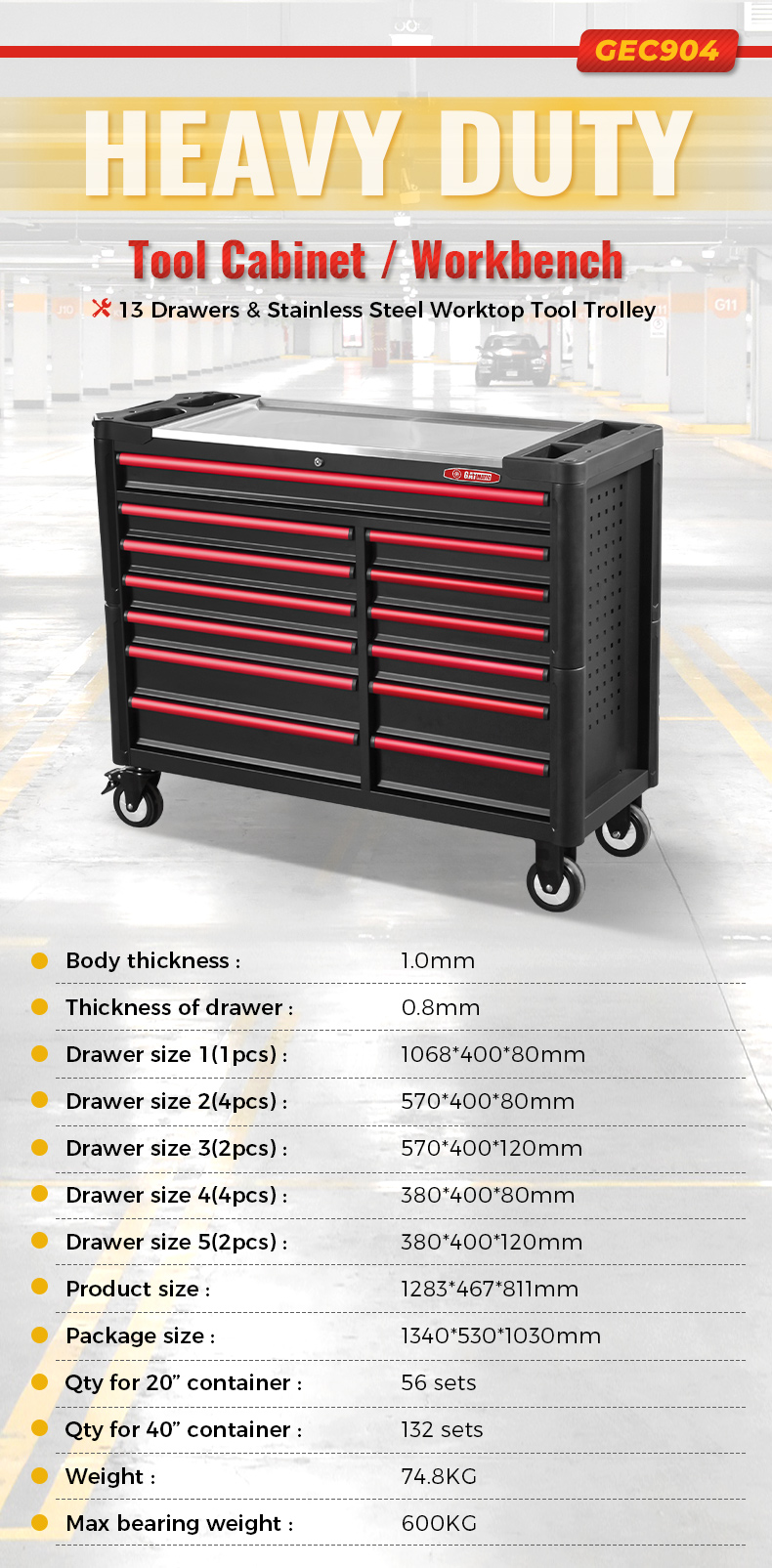Recent Blog
-
Is Touchless Wheel Alignment Right for You? Factors to Consider
2025-03-19 -
The Future of Automotive Service: Exploring Touchless Wheel Alignment Technology
2025-03-13 -
How does the precision of touchless wheel alignment systems compare to traditional methods
2025-03-03 -
How does the precision of touchless wheel alignment systems impact vehicle performance
2025-02-26
How to Organize Your Auto Repair Shop with a Tool Trolley System
In the dynamic and fast-paced environment of an auto repair shop, efficiency and organization are paramount. The seamless orchestration of tools and equipment is not only a matter of convenience but a crucial factor in maintaining a safe and productive workspace. One innovative solution that has proven to be a game-changer is the implementation of a tool trolley system. This essay explores the benefits, considerations, and strategies involved in organizing an auto repair shop using a tool trolley system.
I. Benefits of Organizing with a Tool Trolley System
One of the primary advantages of employing a tool trolley system is the marked improvement in efficiency and productivity. By having a designated space for each tool, mechanics can easily locate and retrieve what they need, minimizing downtime and streamlining the repair process. Furthermore, a well-organized shop contributes to enhanced safety, reducing the risk of accidents and injuries associated with misplaced tools.
The time and cost savings associated with a tool trolley system cannot be overstated. Mechanics spend less time searching for tools, allowing them to focus more on the task at hand. Additionally, the systematic organization helps prevent tools from being misplaced or lost, reducing the need for costly replacements.
II. Selecting the Right Tool Trolley System
Choosing the appropriate tool trolley system requires careful consideration of the shop’s size, layout, and specific needs. Assessing the types of tools and equipment used on a regular basis is crucial, as is establishing a budget that aligns with the shop’s financial constraints. Mobility and flexibility are also key factors, ensuring that the tool trolley system can adapt to the dynamic nature of the repair environment.
III. Organizing Tools and Equipment
Categorizing tools based on function and frequency of use is a foundational step in the organization process. Proper labeling and identification further contribute to a streamlined workflow, allowing mechanics to quickly identify and retrieve the tools they need. Establishing a systematic layout within the tool trolley enhances efficiency, creating a logical flow that aligns with the repair process. Implementing a routine for tool maintenance and inspection ensures that tools remain in optimal condition, contributing to their longevity.
IV. Training and Communication
The successful implementation of a tool trolley system hinges on the training and communication strategies employed. Providing comprehensive training to staff on the use of the system is essential, as is establishing clear communication channels for tool organization. Encouraging a culture of responsibility and accountability ensures that each team member plays a role in maintaining the organized workspace.
V. Maintenance of the Tool Trolley System
Regular inspections and cleaning of the tool trolley system are imperative to its sustained effectiveness. Reevaluating the organization system based on feedback and changes in workflow allows for continuous improvement. Upgrading or replacing components as needed ensures that the tool trolley system remains a reliable asset in the auto repair shop.
VI. Troubleshooting Common Issues
Addressing issues with tool misplacement, handling damaged tools or equipment, and seeking feedback from staff are critical components of effective troubleshooting. By proactively identifying and resolving issues, the tool trolley system can continue to operate seamlessly, contributing to the overall success of the auto repair shop.
Conclusion
In conclusion, the adoption of a tool trolley system represents a strategic investment in the organization and efficiency of an auto repair shop. The benefits extend beyond mere convenience, encompassing improved safety, time and cost savings, and a more streamlined repair process. By carefully selecting, implementing, and maintaining a tool trolley system, auto repair shops can elevate their operational standards and create an environment conducive to success.
FAQs
1. Why is organization important in an auto repair shop, and how can a tool trolley system contribute to it?
Organizing an auto repair shop is crucial for efficiency, safety, and productivity. A tool trolley system contributes by providing a systematic approach to tool storage, ensuring easy access, and minimizing the risk of accidents due to misplaced tools.
2. How do I choose the right tool trolley system for my auto repair shop?
Consider factors such as the size and layout of your shop, the types of tools used, budget constraints, and the need for mobility. Select a tool trolley system that aligns with your shop’s specific requirements and workflow.
3. What benefits can I expect from implementing a tool trolley system in my auto repair shop?
Implementing a tool trolley system can lead to improved efficiency, enhanced safety, time and cost savings, and a well-organized workspace. It streamlines the repair process by making tools easily accessible, reducing downtime.
4. How should I categorize and label tools within the tool trolley system?
Categorize tools based on function and frequency of use. Use clear labeling and identification methods to ensure that mechanics can quickly locate and retrieve the tools they need.
5. How can I encourage a culture of responsibility and accountability among my staff for maintaining the tool trolley system?
Provide comprehensive training on the use of the system, emphasizing the importance of organization. Foster open communication channels, and recognize and reward responsible behavior. Engage staff in the maintenance process to instill a sense of ownership.
Describe Your Needs In Detail!
We will carefully evaluate your needs and give professional solutions.



